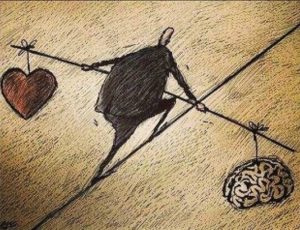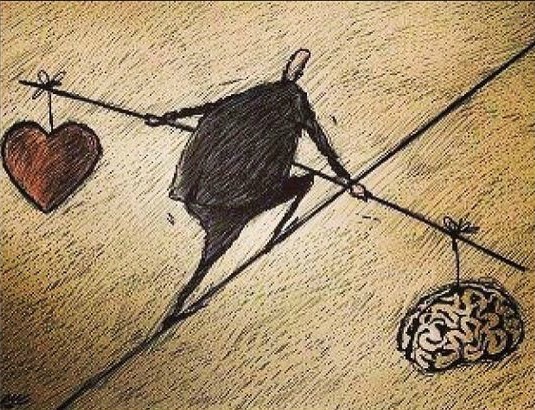What was the last time you read a poem? Those who know me well know why I love poetry. It’s because it holds paradox, that tricky line between intention and ambiguity. It requires patience, because a poem doesn’t always reveal itself readily. Poetry can make people uncomfortable, as I’ve learned many times over as I invite people to my monthly poetry salons. “Well…I don’t know much about poetry,” or “I haven’t read any poems since high school,” they sputter. But as we talk more, they always remember the last poem they heard. And that’s because somehow, the poem managed to connected their heart and their head.
 And that very thing – the heart/head connection – is our duty and our joy as communicators in the social good/social change space. Since co-writing The Development Element with my students at Georgetown in 2014, I’ve been working to put these “principles” into action with my team as Director of Communications at Thousand Currents. Communications is no longer “add-on” service department, beholden to the fundraising function of an organization. At Thousand Currents, it is a full strategy in achieving our mission.
And that very thing – the heart/head connection – is our duty and our joy as communicators in the social good/social change space. Since co-writing The Development Element with my students at Georgetown in 2014, I’ve been working to put these “principles” into action with my team as Director of Communications at Thousand Currents. Communications is no longer “add-on” service department, beholden to the fundraising function of an organization. At Thousand Currents, it is a full strategy in achieving our mission.
But that doesn’t mean it’s easy. The Development Element calls on people in our sector to leave behind 11 useless approaches to communicating about global development, but it doesn’t tackle the next barrier that I’ve been butting up against lately: The skills and practices of communications professionals in the nonprofit sector have been adopted from the private sector’s marketing toolbox. Trouble is…our organizations are not selling anything.
New! Improved! More! Better! Now! Are we in the nonprofit sector “selling” ideas or an opportunity to get involved, which some might argue? My answer is this: Haven’t these very words actually devastated us by building a consumer culture, upholding the inequities we’re trying to fight? These are not concepts I often use when describing the slow, deliberate work of personal, community, and societal transformation – and the intersection between all three.
So here’s what’s rolling around in my head lately, as a result. I hope these 10 “big picture” communications questions can spur your thinking as well!
- People have been left out of their own stories. How do we actively correct this imbalance and injustice?
- How can communications bridge “us” versus “them” mentalities that are becoming an increasingly dangerous part of the political zeitgeist in many countries?
- Pity, guilt, and shame are motivators for charity, but not social change. How do we inspire wider collective action?
- How do we highlight problems without prescribing solutions, but yet offering/highlighting what people are already doing to fight these problems?
- We want compelling, yet not overly simplified storytelling. How can we not only embrace nuance, but break the mold of the hero’s narrative when we know it’s not just personal actions that are needed to see change occur?
- People must tell their own stories. Full stop. Now, every communicator’s job changes from content creators to content producers. Very different role.
- How can communicators be a bridge between those still interested only in “More, better, now!” and those who get it?
- How do we make long-term institutional processes less boring? And “failure” seem less risky?
- There is no such thing as a “voice for the voiceless,” only people who aren’t listening. So…?
- Can we build a new narrative style in our sector, all our own, instead of constantly trying to break through the message clutter that is today’s social media?
Maybe poetry is the only thing that could lead us where we need to go…
***
Related Posts
Is “poverty porn” making a comeback?
How many aid workers does it take to screw in a lightbulb?
#ICYMI: “Farms, Fish Banks, and an Iron Roof” on The Moth
Are the jobs of communicators changing in the development sector?
How to reframe the #globaldev message: Local organizations telling their own story
The power of the pen: Why I left M&E behind for communications
The stories still hard to find: The local responses to Ebola


Thanks so much for pushing my thinking—and others’—on all of this, Jennifer! You are powerful!
Talk about on target . . . thank you so much for this timely, provocative, hopeful post, Jennifer. I love it.
Thank you for sharing Jennifer. Since working with and the class in The Development Element at Georgetown in 2014 these messages are always with me. Sometimes trying to find this type of communications our there, other times trying to apply the principles in the job. Just signed up to the newsletter at IDEX to get more of this worth telling / listening stories.
Great to read you pushing for poetry as a way of helping us communicate better. We need more poetry in social change!
I’m also reflecting on how our adoption of private sector communications strategies/culture has created a culture of competition between orgs (claiming the space, leadership, expertise, etc) rather than sharing and collaboration, especially sharing where we are failing and need to do things differently (and more collaboratively)
Pingback: Americans Shouldn’t Need Yoga or Chai to Care about India Right Now - A Desi Woman Podcast